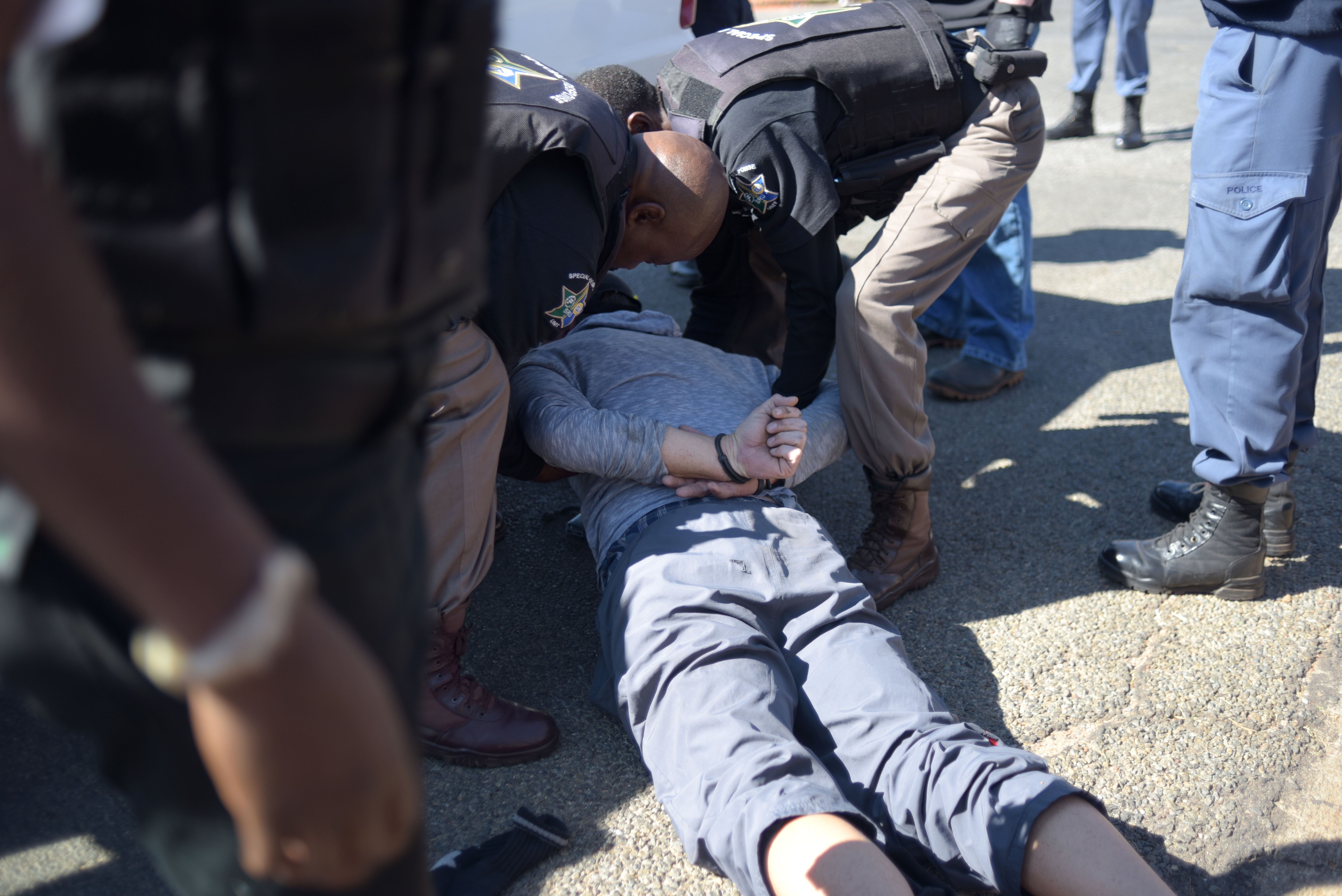The rate of murder, sexual offences and assault has risen in South Africa. We summarise data on eight categories of crime from the police’s statistics for April 2018 to March 2019.

South Africa’s crime statistics for 2018/19 were released by the police in parliament on 12 September 2019. Minister of Police Bheki Cele began the briefing by saying the statistics were “not very rosy”.
This factsheet presents the latest statistics in three ways: first, the number of reported crimes (21,022 murders, for example), then the average crimes per day (58 murders every day).
A third, important, method is crime rates (36.4 murders per 100,000 people). This provides insight into the extent of crime relative to the population. It’s vital for accurately determining whether crime has increased or decreased between years, and showing which areas have a higher risk of crime.
The factsheet summarises eight crimes of public interest. They cover the period 1 April 2018 to 31 March 2019. The Institute for Security Studies has called for more regular crime statistics, saying the “statistics released this week are almost six months out of date and do not reflect the current spate of high-profile violent crimes reported in the media”.
1. Murder
Murder is the unlawful and intentional killing of another person. Murder statistics are considered the most reliable, according to the Institute for Security Studies. This is because most murders can be independently verified.
The number of murders in South African increased from 20,336 in 2017/18 to 21,022 in 2018/19. On average, 58 people were murdered every day.
“Over the past seven years murder has risen by 35%,” the Institute for Security Studies announced in reaction to the crime statistics. “This reverses the downward trend that was evident between 1995 and 2011 during which time murder decreased by 55%.”
Most murders (70%) were committed on Friday, Saturday, Sunday and Monday, said Major General Norman Sekhukhune, head of police crime research and statistics.
The national murder rate increased from 35.8 per 100,000 people to 36.4. The Eastern Cape had the highest murder rate in 2017/18, at 60.9.
| South Africa’s provincial murder rates in 2018/19 | ||
| Province | Number of murders | Murder rate per 100,000 people |
| Eastern Cape | 3,965 | 60.9 |
| Western Cape | 3,974 | 59.4 |
| KwaZulu-Natal | 4,395 | 39.1 |
| Free State | 1,000 | 34.5 |
| Gauteng | 4,495 | 30.5 |
| Northern Cape | 322 | 26.1 |
| North West | 961 | 24.4 |
| Mpumalanga | 996 | 21.9 |
| Limpopo | 914 | 15.6 |
Source: South African Police Service
Murders of women and children
In 2018/19, a total of 2,771 women were murdered in South Africa – down from 2,930 in 2017/18. This means a woman is murdered every three hours. A total of 1,014 children were murdered.
READ: Femicide in South Africa
Attempted murder
There were 18,980 attempted murders reported to the police in 2018/19. This is an increase from 18,233 the previous year.
2. Sexual offences
Sexual offences is a broad crime category that includes rape, compelled rape, sexual assault, incest, bestiality, statutory rape and the sexual grooming of children.
The number of reported sexual offences increased to 52,420 in 2018/19 from 50,108 in 2017/18. Most of these were cases of rape.
The sexual offences crime rate increased from 88.3 per 100,000 in 2017/18 to 90.9 in 2018/19.
| Total sexual offences recorded in South Africa in 2018/19 | |
| Crime | Number |
| Rape | 41,583 |
| Sexual assault | 7,437 |
| Attempted sexual offences | 2,146 |
| Contact sexual offences | 1,254 |
| Total | 52,420 |
Source: South African Police Service
Rape
South Africa’s legal definition of rape is broad. It includes the oral, anal or vaginal penetration of a person (male or female) with a genital organ, anal or vaginal penetration with any object and the penetration of a person’s mouth with the genital organs of an animal.
The police recorded 41,583 rapes in 2018/19, up from 40,035 rapes in 2017/18. This means an average of 114 rapes were recorded by the police each day.
The rape rate increased from 70.5 in 2017/18 to 72.1 in 2018/19.
But the police’s rape statistics should not been viewed as an “accurate measure of either the extent or trend of this crime”, the Institute for Security Studies warned.
There is no recent, nationally representative estimate of how many women are raped in South Africa each year.
3. Assault
Common assault
Common assault is defined as the “unlawful and intentional direct and indirect application of force to the body of another person” or the “threat of application of immediate personal violence to another”.
In 2017/18, 156,243 common assaults were recorded. This increased to 162,012 in 2018/19. On average, 444 people were victims of this type of assault every day.
The common assault rate increased from 275.3 in 2017/18 to 280.8 per 100,000 people in 2018/19.
Assault with the intent to inflict grievous bodily harm
The police recorded 170,979 assaults with the intent to inflict grievous bodily harm in 2018/19 – up from 167,352 in 2017/18. This means, on average, 468 such assaults were recorded every day.
4. Robbery
Common robbery
A robbery is committed when a person unlawfully and intentionally forcefully removes and appropriates property belonging to another person. This is a contact crime where force or violence is used against another person.
In 2018/19, 51,765 common robberies were recorded, up from 50,730 the year before. On average, 142 common robberies were recorded each day.
Robbery with aggravating circumstances
Robbery with aggravating circumstances occurs when a person uses a gun or weapon to commit a robbery.
In 2017/18, 138,364 robberies with aggravating circumstances were recorded. This increased to 140,032 in 2018/19. On average, 384 robberies with aggravating circumstances were recorded each day.
House robbery
House robberies occur when people are confronted and become victims of theft in their homes.
In 2018/19, there were 22,431 incidents of house robbery reported – up from 22,261 in 2017/18. On average, 61 households were robbed each day.
South Africa’s 2017/18 victims of crime survey revealed that only 59% of victims reported the crime to the police.
5. House burglary
A house burglary occurs when a person “unlawfully and intentionally breaks into a building” with the intention to take something from the premises. This is a property crime. There is no contact between victim and perpetrator.
It was reported as the most feared crime in South Africa in the 2017/18 victims of crime survey.
In 2018/19, there were 220,865 house burglaries reported to the police – an average of 605 houses per day.
South Africa’s 2017/18 victims of crime survey revealed that 52.8% of households did not report the crime because they thought the police couldn’t do anything about it.
6. Other crimes
Carjacking
In 2018/19, a total of 16,026 cars were hijacked. This was a decrease from 16,325 the year before. On average, 44 cars were hijacked each day.
Theft of cars or motorcycles
In 2018/19, 48,324 cars or motorcycles were stolen – an average of 132 each day. This is down from 50,663 in 2017/18.
Cash-in-transit heists
There were 183 cash-in-transit heists in 2018/19, down from 238 in 2017/18.
Republished from AfricaCheck
For more news your way, download The Citizen’s app for iOS and Android.






